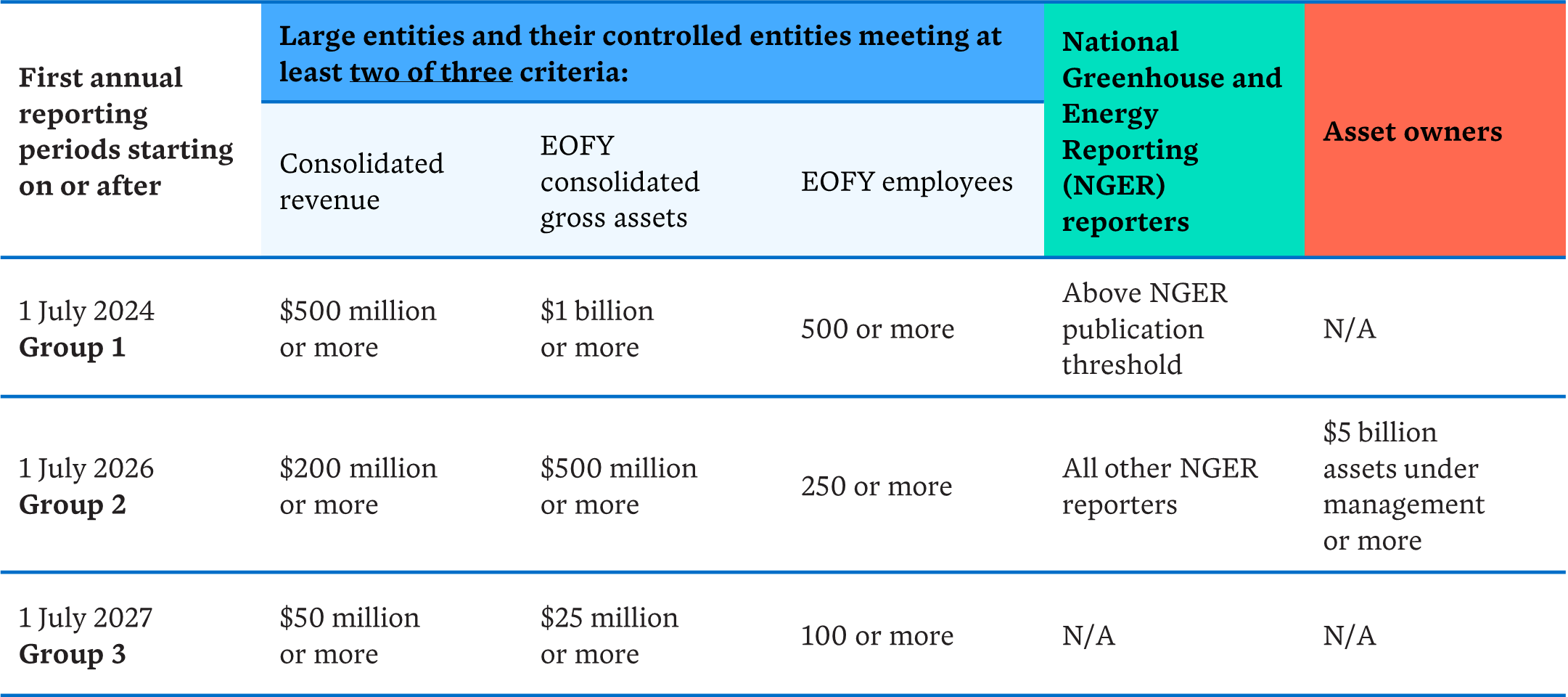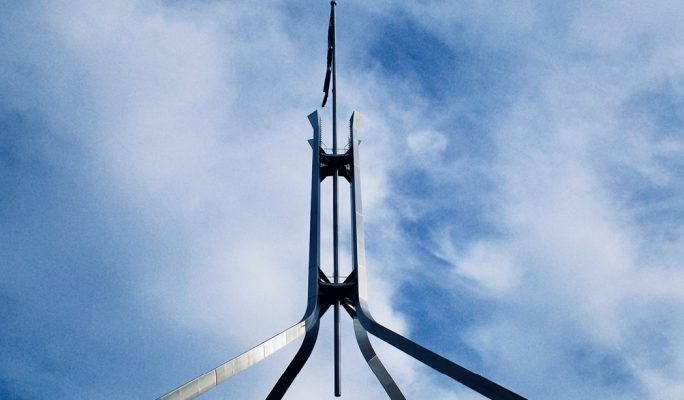Mandatory climate disclosures – what’s new for insurers


In 2023, mandatory climate disclosures were a major talking point for Australia’s business community, as the Australian Government announced plans to implement new reporting rules. With the New Year barely underway, Treasury released its final position paper last week on mandatory climate-related financial disclosures. What does this mean for insurers? We answer all your burning questions.
Insurers can expect some of the most important details for mandatory disclosures will be fleshed out during 2024, starting with this final position paper from Treasury. Issues considered within its pages include which companies disclosures will apply to, and the readiness of the audit and assurance community to achieve this step-change in reporting requirements. Here are the crucial points insurers will need to consider as they begin or ramp up their climate disclosure journey.

In 2024, insurers can expect some of the most crucial details of mandatory disclosures to be decided
What are the key takeaways from the final policy?
- Standards will align with the International Sustainability Standards Board’s (ISSB) inaugural IFRS S2 standard, finalised in June 2023. IFRS S2 provides a common international language for disclosing the effects of climate-related risks and opportunities on a company’s prospects. The Australian Accounting Standards Board is currently consulting on modifications to these standards for Australian matters and requirements.
- Disclosures will apply for large businesses and be phased in three groups – starting with the largest companies.
- The smaller of the large businesses won’t automatically have to disclose, rather they’ll need to make a judgment as to whether they face material climate risks or opportunities. This reflects feedback from stakeholders about unnecessary regulatory burden.
- Full assurance requirements aren’t applicable until 2030. This will allow the auditing and assurance profession time to adjust via the phases to a whole new area of assurance.
Timeline – How did we get here?
2017
Since the release of the Taskforce on Climate-related Financial Disclosures (TCFD) report in 2017, there has been a global trend towards large businesses voluntarily (and later for some jurisdictions, mandatorily) disclosing climate-related financial information.
2022
In December 2022, the Australian Government committed to introducing standardised, internationally aligned reporting requirements for Australian businesses to make climate risk and opportunity disclosures.
2023
Last year was critical in giving effect to Australia’s commitment, with two rounds of consultation on the specific design of the reporting requirements, their implementation and sequencing. We discussed the detail of the policy design last year in our articles Climate change: key considerations for general insurers and New mandatory climate disclosures – what small to medium insurers need to know. The second consultation paper, released in June 2023, received more than 146 responses from interested parties.
2023 was also a big year internationally, with the ISSB stating its IFRS S2 standard was ‘ushering in a new era of sustainability-related disclosures’.
2024
Which brings us to last week, when the Treasury released its final policy position – reflecting feedback from the earlier rounds of consultation.
What needs to be reported?
Reporting content hasn’t changed since the second consultation paper. Climate-related financial disclosures will include information about an entity’s climate-related risks and opportunities, as required by Australian climate disclosure standards, including:
- Information relating to governance, strategy, risk management, and metrics and targets (including Scope 1* and Scope 2* greenhouse gas emissions). These will be required from the first year of reporting.
- Scope 3* emissions (i.e. emissions that occur up or down an organisation’s supply chain and emissions associated with their financing or investment activities). These will be required from the second year of reporting. Scope 3 disclosures would represent information available at the reporting date without undue cost or effort.
The Government endorses full adoption of the ISSB IFRS S2 Climate-related Disclosures standard. Modifications from IFRS S2 are limited to those necessary to ensure standards are fit for purpose for Australia (e.g. Australia’s greenhouse gas emissions estimation methodologies and international climate change commitments).
Will mandatory disclosures apply to my organisation?
This is a critical change, and the answer now is: not necessarily for smaller insurers.
To check whether mandatory disclosures apply, entities must be required to prepare and lodge annual reports under Chapter 2M of the Corporations Act and fall within one (or more) of the following three categories:

Insurers will fall into one of three groups, in assessing whether mandatory disclosures apply
Organisations (including smaller insurers) captured under Group 3 are required to make climate-related financial disclosures in line with the climate disclosure standards only if they face material climate-related risks or opportunities for the financial reporting period. Where Group 3 entities assess they don’t have material risks or opportunities, they would be required only to disclose a statement to that effect.
This is a critical change from what was proposed last year (i.e. that all Group 3 entities would be required to make mandatory disclosures), and is in response to feedback that the regulatory burden would be excessive compared to the benefit from their inclusion.
It’s important for insurers to note that even if they assess their organisation to be exempt (either because they don’t meet the materiality threshold for Group 3 entities, or they’re smaller in size than a Group 3 entity), they still need to consider APRA’s Prudential Practice Guide CPG 229 Climate Change Financial Risks.
When do mandatory disclosures take effect?
As we outline in the table above, entities subject to mandatory climate-related financial disclosure will be phased in three groups over a four-year period. The Government is asking for stakeholder feedback on whether amending legislation to require a 1 January 2025 commencement date for Group 1 entities would improve the quality of reporting during the transition year.
Where do I make disclosures?
Climate-related financial disclosures will sit within a sustainability report forming the fourth report required as part of financial reporting obligations in an entity’s annual report. Entities should include an index table within their annual report that enables users to easily navigate the climate disclosures. Timing of annual report lodgement, including for those required to lodge with ASIC, will stay consistent with current requirements under section 319 of the Corporations Act.
Entities are required to make their sustainability disclosure reports publicly available on their website the day after the report is lodged with ASIC.
Will my disclosures need to be audited?
Yes, in a similar way to disclosures currently required under the Corporations Act for financial reports. Entities will need to obtain an assurance report from their financial auditors, who’ll use technical climate and sustainability experts where required. These requirements will eventually be set out in Australian assurance standards for climate disclosures.
Importantly, the Government has intentionally not mandated a roadmap for the phasing in and scaling up of assurance requirements for climate disclosures, due to the:
- Capability uplift required in the assurance and audit industry
- Uncertainty in determining how long this could take
- Development of an international standard on sustainability assurance, which is underway but not expected to be finalised until the end of 2024.
Limited assurance of Scope 1 and Scope 2 emissions is required, scaling up to the reasonable assurance of climate-related financial disclosures by 2030. The roadmap to reasonable assurance will be flexibly determined by the Auditing and Assurance Standards Board (AUASB).
What else do I need to know?
Entities will be required to disclose against well-established and understood industry-based metrics only from 1 July 2030. They can choose to disclose relevant industry-based metrics voluntarily prior to this date. Interested insurers should actively engage in the Insurance Council of Australia’s climate change program of work to keep up to date with insurance-industry-specific metric discussions.
There is also liability relief for disclosures relating to Scope 3 emissions and certain climate-related forward-looking statements for a fixed three-year period. For reports issued between 1 July 2015 and 30 June 2018, only the regulator will be able to bring action relating to breaches of relevant provisions, and the remedies available to the regulator are limited to injunctions and declarations.
What are my first steps?
Insurers should make an initial assessment as to which reporting group (1, 2, 3 or N/A) they’re likely to belong by the end of the relevant financial reporting period. This will help determine whether you should automatically start preparing for mandatory disclosure or need to assess whether or not you face material climate-related risks or opportunities.
*As a refresher, Scope 1 are direct GHG emissions that occur from sources that are owned or controlled by the company (e.g. emissions from combustion in owned or controlled vehicles). Scope 2 are emissions from the generation of purchased electricity consumed by the company, and Scope 3 are all other indirect emissions.
Other articles by
Alan Greenfield
Other articles by Alan Greenfield
More articles

What climate disclosure means for the public sector
Following up our article on climate disclosures for insurers, we look at the latest developments for government entities across Australia
Read Article

Where are the businesses most reliant on JobKeeper (January)?
Our interactive map shows the proportion of businesses receiving JobKeeper by local government area from April 2020 to January 2021
Read Article
Related articles
Related articles
More articles

What climate disclosure means for the public sector
Following up our article on climate disclosures for insurers, we look at the latest developments for government entities across Australia
Read Article

RADAR FY2023 New Zealand Snapshot
Our NZ general insurance FY2023 overview sheds light on New Zealand's insurance landscape to help insurers chart a steady path forward.
Read Article







